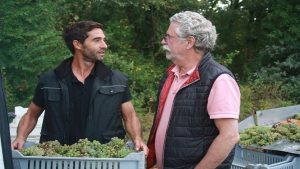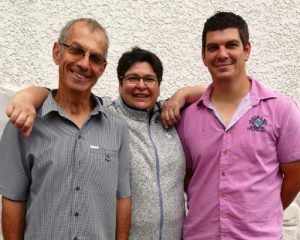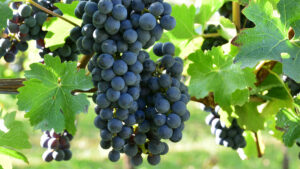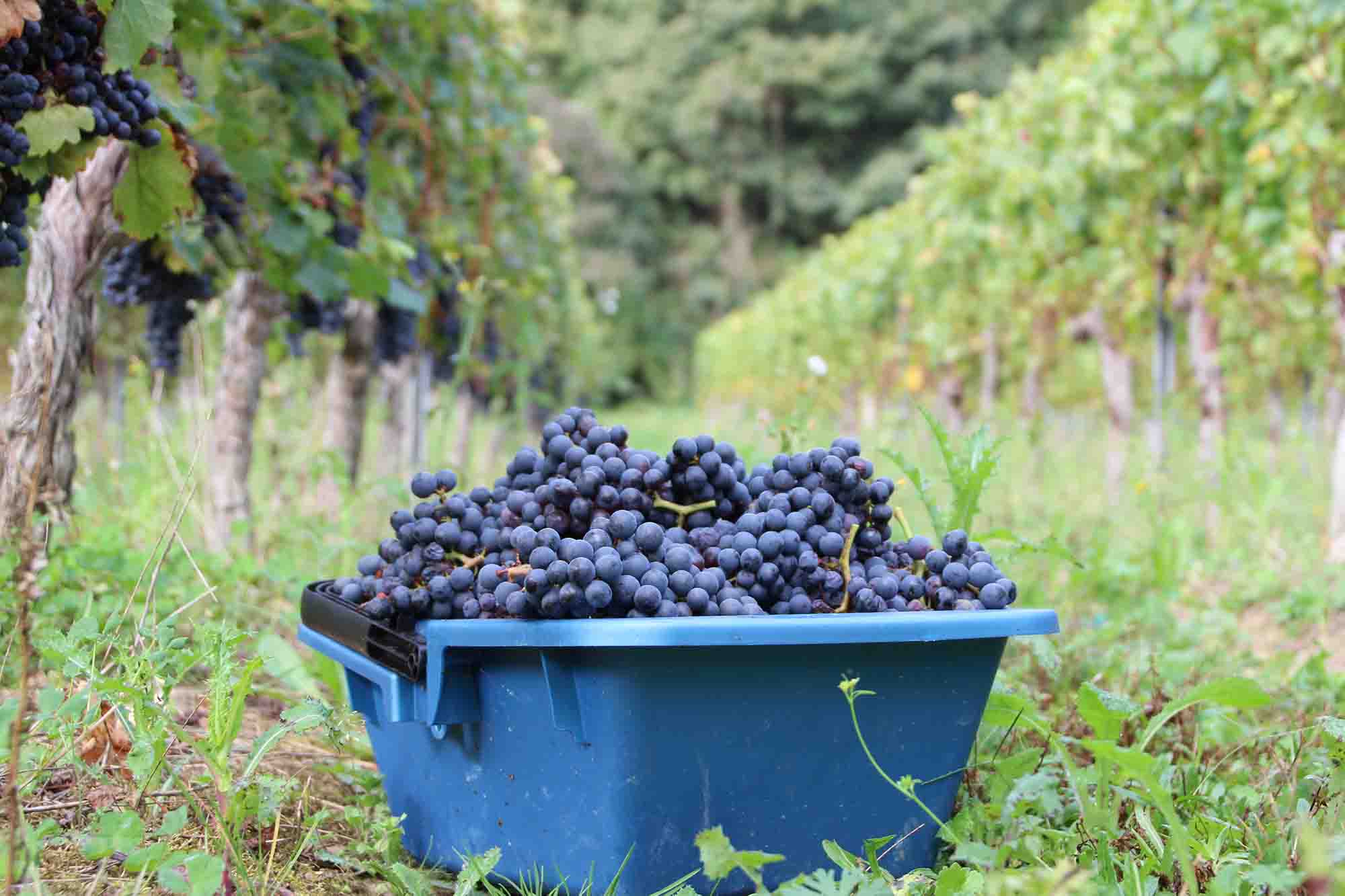 After the superb 2015 and 2016, will the 2017 fall under the curse of the vintages finishing by “7”? If the quality is generally there, the quantities are lacking in certain regions or appellations, with a historically low harvest.
After the superb 2015 and 2016, will the 2017 fall under the curse of the vintages finishing by “7”? If the quality is generally there, the quantities are lacking in certain regions or appellations, with a historically low harvest.
Complicated weather conditions
On 1st October 2017, the French Department of Agriculture reckoned the harvest was going to be down 18% compared to the five-year average[i]. Wine production is estimated at 36.9 million hectolitres, 19% lower than 2016. The harvest is thus historically low, and even lower than 1991, which also experienced a historic frost.
The frost was utterly harmful as it happened at an already advanced and sensitive stage of vine development – this is likely to occur more often with global warming and the more precocious vegetative cycle. Even if after the frost, the vineyard was able to partially compensate the losses by the emission of base-buds in some frozen plots, especially in Bordeaux and the Loire. Moreover, hail also hit several vineyards, reducing even more the production (Burgundy-Beaujolais, Southwest, Languedoc and Southeast). Finally, drought continued in the South (Corsica, Languedoc and Beaujolais), which amplified the dehydration of the grapes. Conversely, in some regions, the more humid climate towards the end of the summer, created rot (Champagne, Charente, Bordeaux and Alsace), advancing the date of harvests and obliging thorough sorting of the picked grapes.
The curse of the vintages finishing by “7”
Will this 2017 vintage and its small quantities confirm the “curse of vintages finishing by 7”? Indeed, apart from 1947, the vintages finishing by “7” rarely bring happiness to wine harvests. 2017 is in any case a record year for harvest precocity: in Languedoc, white grapes were starting to be picked on 9th August, the earliest date ever recorded. All regions are in advance of about fifteen days. Considering global warming it is forecasted that in thirty years, the harvests will be advanced of two to three weeks. Polar bears are not the only ones suffering from global warming; being a winegrower seems to be an increasingly risky job, especially economically….
2017: focus on each region
Champagne
End of August, the region was affected by humidity and storms favouring rot. The grapes had to be sorted during the harvest lowering the production level. The renowned houses have announced that they managed to pick good Chardonnay grapes, but the situation was a little more complicated for Pinot. A reduced production of 6% compared to 2016 is estimated.
Beaujolais
Frost had mitigated consequences, but drought reduced the harvested levels. The production seems to be heterogeneous, although the overall quality is good, with balanced wines between acidity, fruitiness and tannins. Roots had to go more deeply than usual to feed, which seems to let the terroir express even better, according to the Inter Beaujolais.
Bordeaux
The spring frost was the most severe one since 1991 and the consequences were even more important, as Bordeaux is not as used as other regions, like Champagne or Chablis, to this type of weather. The level maturity of the grapes is also going to be a problem, as some grape bunches appeared before the frost and others after. Unfortunately, all the winegrowers will be concerned in Bordeaux… Thankfully, the end of the season was more favourable, allowing a good quality of the vintage. Lafite even announced that although the quantities are going to be very small, the quality is close to 2015. However, the quality is also going to be very heterogeneous, even within certain appellations, like Pomerol and Saint-Emilion, where most domains will be fine, and others have lost everything. Margaux and Saint-Julien seem to do well, as they were not concerned by the April frost. The harvest is going to be 45% lower than the 2016 one and 33% lower than the five-year average.
Rhône
Both frost and drought hit the region, creating a harvest comparable to the one of 2013. The North of the region started harvesting 15 days before 2016. This date was complicated to define, to be able to have balanced wines, mature enough and not too acid. Quality seems present.
Loire: volumes are heterogeneous, but globally, the production is foreseen as 8% above the (low) harvest of 2016.
Alsace: frost reduced the production of 30%.
Jura: more than half of the harvest was destroyed.
Savoie: the situation is so heterogeneous, that it will have to be assessed domain by domain.
Southwest: frost and hail have reduced volumes of 20%.
Languedoc-Roussillon: frost and drought have reduced the quantities of 16%, for Corsica too.
Charente: the inter-professional association had decided to increase the allowed yields on the plots that were not concerned by frost in order to increase the production. However, it is still 12% of the production that has been destroyed.
The exception: Burgundy, abundant and qualitative
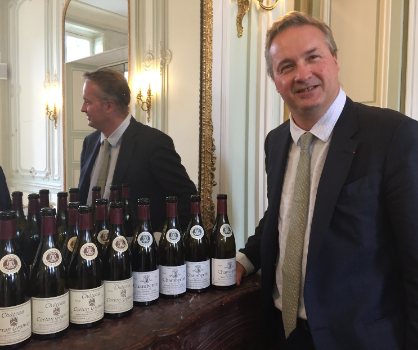 Burgundy stands out with a production increased by 300,000 hectolitres compared to 2016 (+20%, with 1.5 million hectolitres). 2016 was historically low for Burgundy which catches up with a generous and qualitative vintage for 2017. Louis-Fabrice Latour, manager of the eponymous house and president of the Burgundy inter-professional association, agrees with this statement. Small drawback though for Chablis, which has suffered from weather hazards. The situation is also more complicated in Mâcon.
Burgundy stands out with a production increased by 300,000 hectolitres compared to 2016 (+20%, with 1.5 million hectolitres). 2016 was historically low for Burgundy which catches up with a generous and qualitative vintage for 2017. Louis-Fabrice Latour, manager of the eponymous house and president of the Burgundy inter-professional association, agrees with this statement. Small drawback though for Chablis, which has suffered from weather hazards. The situation is also more complicated in Mâcon.
For this heterogeneous vintage, you will have to be careful, select well your bottles and listen to the instructions of professionals. No worries, we will help you and try to guide you, doing our best, as usual!
See all wines currently on sale
Register here to access auctions and fixed-price sales
Receive a free estimate of your cellar
Read further on iDealwine Le Blog:
- 2015 wine: great scores for Northern French regions
- Natural wine: booming at auction
- The Bordeaux En Primeur System
[i] In Agreste Quick News ─ Viticulture October 2017 ─ n° 2017-147, French Department of Agriculture

